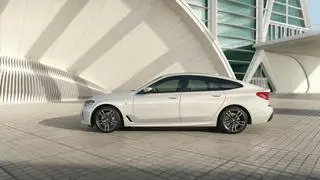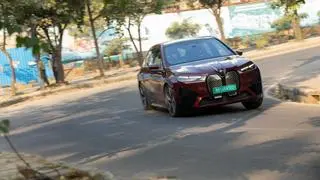When Joerg Mommertz was offered the mandate of heading his company’s operations in India, he did not jump at it immediately.
“It was the first time in my life that I asked my boss to give me two weeks to make up my mind. Normally, I decide all this on the phone but India was not on my map,” recalls the Chairman and Managing Director of MAN Trucks India.
Today, Mommertz is raring to go and is quickly on his way to completing a year here. “India is a stable democracy with a liberal economic environment. From our point of view, it is a developing emerging market with a big operation,” he says.
It is also his view that “if you don’t like challenges and expect the world to look like Munich (MAN’s headquarters), you may not go forward”. At a personal level, life in Pune is “also nice” though the bigger priority is to grow the business.
After all, MAN entered this market a little over a decade ago through a joint venture. Today, it is on its own with a manufacturing facility in Pithampur, Madhya Pradesh, and corporate headquarters in Pune.
Yet, the truth is that MAN is still to make a significant impact in a market dominated by the likes of Tata Motors and Ashok Leyland along with VECV and Daimler India Commercial Vehicles. Mommertz believes that the key is to be patient and take one thing at a time even while sticking to MAN’s core DNA of heavy trucks.
“Of course, I am ambitious but also realistic. It is not about getting the biggest market share but a kind of positioning in India. We want to be considered by the more demanding customer, step by step, for all transport-related business,” he says.
Focus on growthFrom MAN’s point of view, the focus should be more on sustainable growth in volumes, rather than market share, especially when “you are coming from a niche”. Mommertz makes it clear that it would be arrogant for his company to believe that it will be a dominant player in a decade. This is akin to a “Chinese producer entering Germany and hoping to beat Mercedes in 10 years”, which would only be wishful thinking.
While building volumes in the domestic market is one side of the story, MAN is also looking at a larger global role for India in terms of sourcing. There are a handful of top-class suppliers already and the base can increase depending on requirements from the global network.
After all, MAN is part of Volkswagen Truck and Bus, which also owns Swedish commercial vehicle maker Scania and recently took a 16.6 per cent stake in Navistar of the US. To that extent, the sourcing opportunities from India are immense; except that this will take time.
Working with ScaniaScania has a facility near Bengaluru and it will be interesting to see if some synergies can be achieved with MAN at the back end. It was only last year when Volkswagen Truck and Bus announced that teams consisting of engineers from both brands would develop core components of the drivetrain together. There would also be common platforms for engines, gearboxes, axles and exhaust after-treatment systems.
“Of course, we are looking for potential with Scania in India but we have nothing concrete yet. The set-up between the two is different as also the products, which means there are no real synergies. However, this is an ongoing process and maybe we will see some results,” says Mommertz.
Neither company has achieved anything remarkable in terms of volumes and market share, which only makes a marriage the best option going forward. Yet, it is easier said than done given the distances between the two facilities.
This is quite unlike the Russian experience where MAN and Scania had exclusive facilities in St Petersburg, which were not too far away from each other. There were “ambitious plans” in place but then Russia was hit by an economic crisis, which did not justify separate operations.
Yet, as Mommertz says, these were assembly operations quite unlike the Pithampur plant in India, which has in-house machine shops with engines and axles. As a result, it was easier to combine manufacturing in Russia whereas it will be a completely different ballgame in India.
“We are competitors at the front end and even if we were to look for synergies, the customer needs to get the feeling that the DNA is a MAN or Scania,” he says while citing the example of the VW Touareg and Porsche Cayenne, which share similar architectures but are still distinctly different cars.
And even as exploratory work on sharing components and the like continues in terms of “talks without any limits”, Mommertz reiterates that eventually all this will need to make business sense even while adding good-humouredly that “we could always assemble the truck of another brand in our facility”.
BS VI regimeWhile MAN plans to increase its global business from India in terms of shipments to Africa, Central Asia and the Middle-East, there is work ahead on Bharat Stage VI emission norms, which come into effect from April 2020. “By implementing new emission standards along with technologies, the product will be upgraded and we can address more markets,” says Mommertz.
The BS VI regime will also see pressure on costs, which will be a big challenge in a price-sensitive arena like commercial vehicles. According to the MAN chief, the customers will eventually have to decide where they get more value for money. It also remains to be seen how the post-BS VI era will pan out in terms of market dynamics. Will it get more homogeneous with a greater sense of parity in competition?
Mommertz then cites the example of Poland, which is truly a well developed European market today in sharp contrast to its origins as an underdeveloped East European country. There is no local player but the market share of seven European truck brands “is much more homogeneous than in markets with settled local players”.
In the Indian context, MAN is also keen on staying true to its DNA, which is about legacy and core competence. “We have to find the right brand positioning and maintain it especially when our customers are sensitive,” says Mommertz. This effectively means that there is no compelling reason to look for segments below 16 tonnes, at least for now.








Comments
Comments have to be in English, and in full sentences. They cannot be abusive or personal. Please abide by our community guidelines for posting your comments.
We have migrated to a new commenting platform. If you are already a registered user of TheHindu Businessline and logged in, you may continue to engage with our articles. If you do not have an account please register and login to post comments. Users can access their older comments by logging into their accounts on Vuukle.